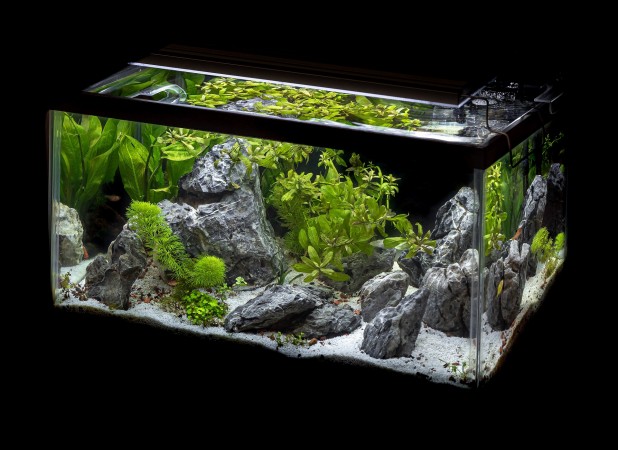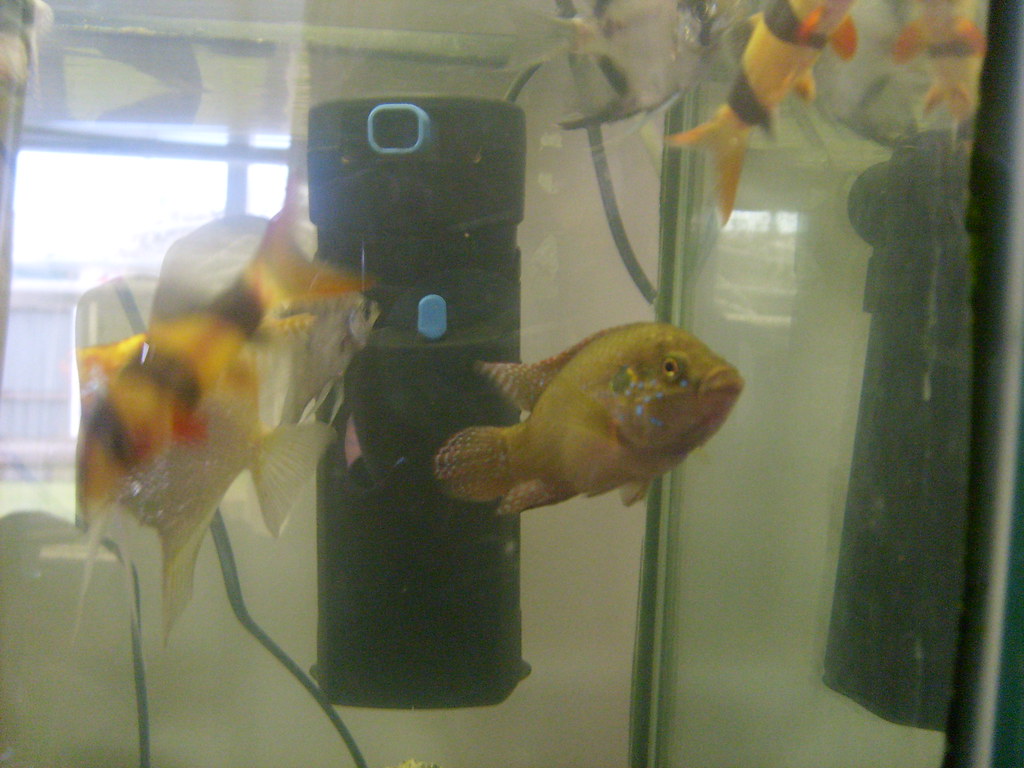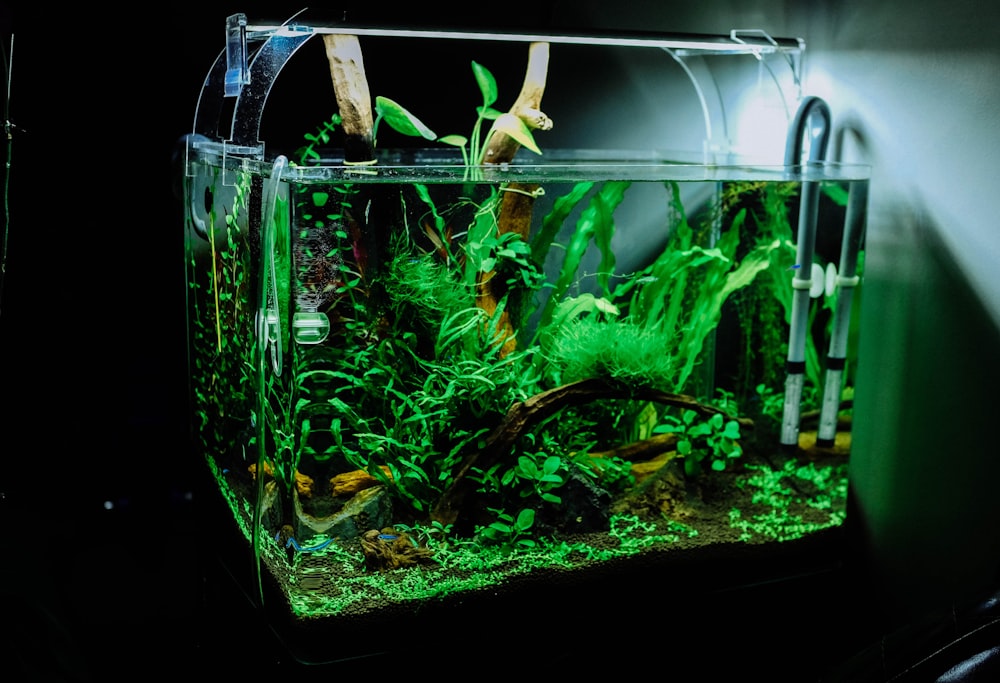Types Of Aquarium Filters - How To Choose One For Your Tank
- Sep 05, 2021
- Rita
- 852 0 0

A good quality aquarium filter is probably the single most important piece of hardware for any fishkeeper. Apart from providing some current and filtering out physical waste particles from the water, your filter is really important for maintaining the beneficial bacteria colonies your tank needs to remain cycled.
In this article, I’ll introduce you to some of the most popular aquarium filter types available. I’ll also explain some of the pros and cons of each type.
Why Use A Filter?
Many people think filters are only useful for keeping the water in their fish tanks clear, but aquarium filters do a lot more than that. Apart from removing particles of fish waste, uneaten food, and other debris, filters also keep the water moving. This helps to prevent stagnation and increases oxygen levels.
Probably the most important function of an aquarium filter is to provide a place for special, healthy bacteria to live. These beneficial bacteria convert harmful ammonia, a chemical found in fish waste as well as decomposing matter, into nitrites and then into nitrates. Nitrates are much safer for your fish in high concentrations than ammonia and nitrites.

A nice one of our new cichlid by Daniel Johnston
The benefits of a filter:
- Keeps water free of suspended particles
- Keeps water clear
- Keeps water smelling fresh
- Oxygenates water
- Provides a home for beneficial bacteria
- Keeps the water moving
The 3 Types Of Filtration
There are three main types of filtration that happen in aquarium filters. These are:
-
Mechanical Filtration
This is the physical removal of particles from the water column. Basically, the particles get sucked into the filter media and gt stuck there.
-
Chemical Filtration
Chemical filtration is the removal of certain chemicals from the water. Not all filters are able to perform this function, however. Filters that use carbon as a media perform chemical filtration.
-
Biological Filtration
Biological filtration is the process of converting harmful ammonia into nitrites and then nitrates. Although you can’t really see any difference in the clarity of your water, the benefits of biological filtration are very important for the health of your fish and other aquatic animals.
Popular Types Of Aquarium Filters
Now that we know what filters do and why they are so important, let’s take a brief look at four of the most popular types of aquarium filters.
1. Internal Power Filter
Internal power filters are popular and affordable systems for home aquariums. These filters are kept under the water inside your aquarium and are usually attached to the glass using simple suction cups. Internal power filters have a built-in motor that sucks water through and over filter media before pumping it back out into the tank.
Pros:
- Affordable
- Comes ready to use
- Compact
- Relatively quiet
Cons:
- Visible in the aquarium
- Can create strong currents
- Small animals can become trapped in the filter intake
2. Hang-On-Back Filters
Hang-on-back filters, or HOB filters as they are often called, are very popular options for the home aquarium. These filters simply clip onto the rim of your tank and can either hang into or outside of your tank depending on the type you have.
HOB filters have a built-in water pump that sucks water from your tank through the filter media before pushing it back into your tank.
Pros:
- Simple to use and maintain
- Has the power to remove more particles from the water
Cons:
- Can be noisy
- Higher power needs
3. Sponge Filters
Sponge filters are basically just large sponges that water is pulled through to filter out waste and other impurities. These filters generally have no moving parts and are very affordable. To run a sponge filter, you will need an air pump. These are usually sold separately.
The air bubbles flowing out of the sponge filter create a vacuum effect that pulls water through the sponge. The current this process produces is quite weak so won’t affect weak swimmers in your tank. If you have creatures that don’t swim so well, this filter is a great choice.
Another great thing about spine filters is that you can run many of them with a single large air pump.
Pros:
- Affordable
- Great for breeder tanks, shrimps, and weak swimmers like bettas
- Eady to maintain
- Low power needs when running several tanks
Cons:
- Needs a separately sold air pump
- Takes up a lot of room in the tank
4. Canister Filters
Canister filters are kept outside of the aquarium and are usually kept in a cabinet underneath the tank or somewhere else out of sight. The water from your tank is pumped into the canister filter and then back into your tank through hoses which are usually a few feet long. This is great a great option if you want to block out the noise of the filter. The only parts visible in your tank are the intakes and outflows.
Pros:
- Provides high-quality filtration
- Kept outside of the tank for a more natural look
Cons:
- Large system
- Expensive
How To Choose A Filter Model
Most aquarium filter models do state the tank size they are recommended for. Sometimes the manufacturers do overestimate their product’s ability but usually, this depends on a variety of factors including your tank stock level.
As a general guide, it is recommended that you use a model that can process the volume of your water in your tank 4-6 times every hour. For example, if you have a 10-gallon aquarium, a filter that has a flow rate of 40 to 60 gallons per hour is recommended.
How To Clean Your Filter
A common mistake that beginners make is replacing their filter media when it becomes clogged. It also happens that some wash their filter media with harsh chemicals. The beneficial bacteria that live in your filter media are pretty sensitive. For this reason, it is essential that you take good care of them since they keep your tank alive and functioning properly.
Only rinse your filter media with water that you just removed from your tank during a water change. Avoid using any detergents and remember that even tap water contains harsh chemicals. For this reason, you’ll need to condition the tap water before adding it to your tank.
In time, the outside of your filter can become covered in algae. Use a soft brush to clean this off. Be careful not to scratch clear plastic parts if you want to keep your filter looking new. You can take the filter out of the tank while doing this, but keep the media in the tank if possible.
Running Two Filters
Many experienced aquarists will run two filters on a tank at the same time. You can’t really have too much filtration, but you can have too much flow. The benefits of running two filters are that if one should malfunction, you will always have a spare running.
Also, if you keep many tanks, using your spare filter is a great way to cycle new aquariums, quarantine, and breeder tanks when you need them.
Final Thoughts
At the end of the day, the filter you select is going to depend on the type of tank you keep and your budget. Follow the advice in this guide to help you make an informed choice. Remember, using a filter is absolutely essential for the health of your livestock. Happy fishkeeping!







About author